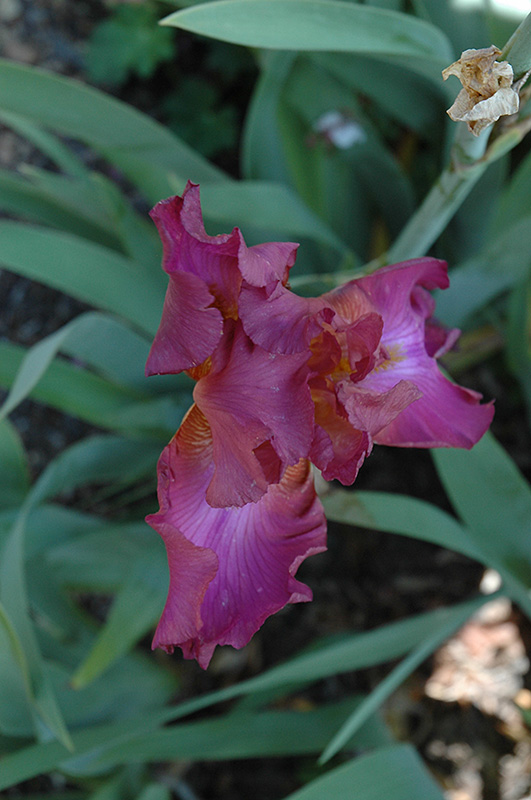32 inches
4 feet
18 inches


3a
Tall Bearded
Rosalie Figge Iris features bold lightly-scented deep purple flag-like flowers with violet overtones at the ends of the stems from early to mid summer. The flowers are excellent for cutting. Its attractive sword-like leaves remain bluish-green in color throughout the season.
Rosalie Figge Iris is an herbaceous perennial with tall flower stalks held atop a low mound of foliage. Its medium texture blends into the garden, but can always be balanced by a couple of finer or coarser plants for an effective composition.
This plant will require occasional maintenance and upkeep, and should be cut back in late fall in preparation for winter. Deer don't particularly care for this plant and will usually leave it alone in favor of tastier treats. It has no significant negative characteristics.
Rosalie Figge Iris is recommended for the following landscape applications;
- Mass Planting
- General Garden Use
Rosalie Figge Iris will grow to be about 32 inches tall at maturity extending to 4 feet tall with the flowers, with a spread of 24 inches. When grown in masses or used as a bedding plant, individual plants should be spaced approximately 18 inches apart. It grows at a medium rate, and under ideal conditions can be expected to live for approximately 10 years. As an herbaceous perennial, this plant will usually die back to the crown each winter, and will regrow from the base each spring. Be careful not to disturb the crown in late winter when it may not be readily seen!
This plant does best in full sun to partial shade. It does best in average to evenly moist conditions, but will not tolerate standing water. It is not particular as to soil type or pH. It is somewhat tolerant of urban pollution. This particular variety is an interspecific hybrid. It can be propagated by division; however, as a cultivated variety, be aware that it may be subject to certain restrictions or prohibitions on propagation.
